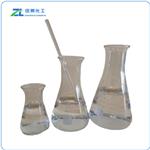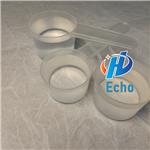- Butyl benzyl phthalate
-

- $20.00 / 1KG
-
2024-05-10
- CAS:85-68-7
- Min. Order: 1KG
- Purity: 99%
- Supply Ability: 300 Tons/ year
- Benzyl butyl phthalate
-

- $50.00/ kg
-
2024-04-25
- CAS:85-68-7
- Min. Order: 1kg
- Purity: 99%
- Supply Ability: 5000kg/week
- Benzyl butyl phthalate
-

- $10.00/ kg
-
2024-04-23
- CAS:85-68-7
- Min. Order: 1kg
- Purity: 99.7%
- Supply Ability: 200000kg
|
| | Benzyl butyl phthalate Basic information |
| | Benzyl butyl phthalate Chemical Properties |
| Melting point | <-35°C | | Boiling point | 370°C | | density | 1.1 g/mL at 25 °C(lit.) | | vapor density | 10.8 (vs air) | | vapor pressure | 0.16 mm Hg ( 150 °C) | | refractive index | n20/D 1.54(lit.) | | Fp | >230 °F | | storage temp. | room temp | | solubility | DMSO: 100 mg/mL (320.14 mM) | | form | Oily Liquid | | color | Clear | | Specific Gravity | 1.1 | | Water Solubility | 0.000269 g/100 mL | | FreezingPoint | -35℃ | | BRN | 2062204 | | Henry's Law Constant | (x 10-6 atm?m3/mol):
1.3 at 25 °C (calculated, Howard, 1989) | | InChIKey | IRIAEXORFWYRCZ-UHFFFAOYSA-N | | LogP | 4.84 at 20℃ | | CAS DataBase Reference | 85-68-7(CAS DataBase Reference) | | IARC | 3 (Vol. Sup 7, 73) 1999 | | NIST Chemistry Reference | Phthalic acid, benzyl butyl ester(85-68-7) | | EPA Substance Registry System | Butyl benzyl phthalate (85-68-7) |
| Hazard Codes | T,N | | Risk Statements | 61-50/53-62 | | Safety Statements | 53-45-60-61 | | RIDADR | UN 3082 9/PG 3 | | WGK Germany | 2 | | RTECS | TH9990000 | | Autoignition Temperature | 450 °F | | TSCA | Yes | | HazardClass | 9 | | PackingGroup | III | | HS Code | 29173400 | | Hazardous Substances Data | 85-68-7(Hazardous Substances Data) | | Toxicity | Acute oral LD50 for guinea pigs 13,750 mg/kg, mice 4,170 mg/kg, rats 2,330 mg/kg (quoted,
RTECS, 1985). |
| | Benzyl butyl phthalate Usage And Synthesis |
| Description | Butyl benzyl phthalate is a clear, oily liquidwith a slight odor. Molecular weight = 312.39; Specificgravity (H2O:1): 1.1; Boiling point = 370�; Freezing/Melting point 5 2 34.7�C; Relative vapor density (air = 1):10.8; Vapor pressure = very low; Flash point =199℃;Autoignition temperature =422℃. Hazard Identification(based on NFPA-704 M Rating System): Health 1,Flammability 1, Reactivity 0. Practically insoluble in water. | | Chemical Properties | Benzyl butyl phthalate is a clear, oily liquid with a slight odor. | | Uses | Benzyl n-butyl phthalate is used as a plasticizer for vinyl foams. It is also used in floor tiles, in traffic cones, food conveyor belts and artificial leather. Further, it acts as an organic intermediate. In addition to this, it is used as a perfume fixative. | | Uses | A phthalate metabolite with genotoxic effect. | | Definition | ChEBI: Butylbenzyl phthalate is a benzyl ester. | | Production Methods | BBP is manufactured by the sequential addition of butanol
and benzyl chloride to phthalic anhydride. It is used as a
plasticizer for polyvinyl chloride plastics, particularly vinyl
floor tile, vinyl leather, and cloth coating. | | General Description | A clear colorless liquid with a mild odor. Primary hazard is to the environment. Immediate steps should be taken to limit spread to the environment. Easily penetrates the soil to contaminate groundwater and nearby waterways. | | Air & Water Reactions | Slightly soluble in water and slightly denser than water. | | Reactivity Profile | Benzyl butyl phthalate is an ester. Esters react with acids to liberate heat along with alcohols and acids. Strong oxidizing acids may cause a vigorous reaction that is sufficiently exothermic to ignite the reaction products. Heat is also generated by the interaction of esters with caustic solutions. Flammable hydrogen is generated by mixing esters with alkali metals and hydrides. Can generate electrostatic charges. [Handling Chemicals Safely 1980. p. 250]. | | Health Hazard | Prolonged contact with liquid causes some irritation of eyes and skin. | | Health Hazard | The acute oral toxicity of this compoundis low. It is, however, more toxic, thanthe phthalic acid dialkyl esters. The toxic symptomsinclude nausea, dizziness, somnolence, andhallucination. The oral LD50 value in mice iswithin the range of 4200 mg/kg. Oral admin istration produced reproductive toxicity inmale mice (paternal effects). At a dose of2% in diet, it caused maternal and develop mental toxicity and an increased incidence. | | Fire Hazard | Special Hazards of Combustion Products: Irritating vapors of unburned chemical may form in fires. | | Potential Exposure | Benzyl butyl phthalate is used as a plasticizer for polyvinyl and cellulosic resins. It is also used as an organic intermediate. Incompatibilities: Incompatible with strong acids; nitrates, oxidizers. Destructive to rubber and paint. | | First aid | If this chemical gets into the eyes, remove anycontact lenses at once and irrigate immediately for20�30 min, occasionally lifting upper and lower lids. Seekmedical attention immediately. If this chemical contacts theskin, remove contaminated clothing and wash immediatelywith soap and water. Seek medical attention immediately. Ifthis chemical has been inhaled, remove from exposure, beginrescue breathing (using universal precautions, includingresuscitation mask) if breathing has stopped and CPR if heartaction has stopped. Transfer promptly to a medical facility.When this chemical has been swallowed, get medical attention. Give large quantities of water and induce vomiting. Donot make an unconscious person vomit | | Carcinogenicity | The NTP examined the carcinogenicity
of BBP in rats and mice. Groups of 50 male
and female rats and mice were exposed to BBP via the diet at
levels of 0, 6000, or 12,000 ppm (0, 300, and 600 mg/kg for
rats and 0, 780, or 1560 mg/kg for mice). Male and female
mice and female rats were exposed for 103 weeks. Due to
poor survival, all males were sacrificed at weeks 29–30; this
part of the study was later repeated. No treatmentrelated
neoplasms were observed in mice. Survival was not
affected. A dose-dependent reduction in body weight in both
sexes was the only treatment-related effect observed in this
study. Furthermore, nonneoplastic changes were all within
the normal limits of incidence for B6C3F1 mice. The NTP
concluded that under the conditions of the bioassay, BBP
“was not carcinogenic for B6C3F1 mice of either sex.” An
increased incidence of mononuclear cell leukemias was
observed in the high-dose female rats. No other treatmentrelated
findings were observed. The NTP concluded that
BBP was “probably carcinogenic for female F344/N rats,
causing an increased incidence of mononuclear cell
leukemias”. The biological significance of this finding
is uncertain as the background incidence of this tumor type in
F344 rats is quite high. | | Source | Detected in distilled water-soluble fractions of new and used motor oil at concentrations
of 8.6–13 and 14–17 μg/L, respectively (Chen et al., 1994) | | Environmental fate | Biological. In anaerobic sludge diluted to 10%, benzyl butyl phthalate biodegraded to
monobutyl phthalate, which subsequently degraded to phthalic acid. After 40 d, >90% of applied
amount degraded (Shelton et al., 1984). When benzyl butyl phthalate (5 and 10 mg/L) was
statically incubated in the dark at 25 °C with yeast extract and settled domestic wastewater
inoculum, complete biodegradation with rapid adaptation was observed after 7 d (Tabak et al.,
1981). In activated sludge, the half-life was 2 h (Saeger and Tucker, 1976). Gledhill et al. (1980)
reported half-lives of 2 and <4 d for benzyl butyl phthalate in river water and a lake water
microcosm, respectively. Aerobic degradation of benzyl butyl phthalate by acclimated soil and
activated sewage sludge microbes was studied using an acclimated shake flask CO2 evolution test.
After 28 d, loss of benzyl butyl phthalate (primary degradation) was 43%, with a lag phase of 15.6
d, and ultimate biodegradation (CO2 evolution) was 43%. The half-life under these conditions was
19.4 d (Sugatt et al., 1984).
Surface Water. The biological half-life of benzyl butyl phthalate in river water was determined
to be 2 d (Saeger and Tucker, 1976).
Photolytic. Gledhill et al. (1980) reported the photolytic half-life is >100 d.
Chemical/Physical. Benzyl butyl phthalate initially hydrolyzes to butyl hydrogen phthalate. This
compound undergoes additional hydrolysis yielding o-phthalic acid, 1-butanol, and benzyl alcohol
(Kollig, 1993). Gledhill et al. (1980) reported the hydrolysis half-life is >100 d. | | Solubility in organics | 4.05 (Veith et al., 1980)
4.73 (Ellington and Floyd, 1996)
4.80 (Hirzy et al., 1978)
4.91 at 20 °C (shake flask-UV spectrophotometry, Leyder and Boulanger, 1983)
4.77 (shake flask-GC, Gledhill et al., 1980) | | storage | Color Code—Green: General storage may be used.Prior to working with this chemical you should be trained onits proper handling and storage. Store in tightly closed containers in a cool, dry place, or refrigerator away from incompatible materials listed above. Metal containers involving thetransfer of this chemical should be grounded and bonded.Drums must be equipped with self-closing valves, pressurevacuum bungs, and flame arresters. Use only nonsparkingtools and equipment, especially when opening and closingcontainers of this chemical. Sources of ignition, such assmoking and open flames, are prohibited where this chemicalis used, handled, or stored in a manner that could create apotential fire or explosion hazard. A regulated, marked areashould be established where this chemical is handled, used,or stored in compliance with OSHA Standard 1910.1045. | | Shipping | UN3082 Environmentally hazardous substances,
liquid, n.o.s., Hazard class: 9; Labels: 9—Miscellaneous
hazardous material, Technical Name Required | | Incompatibilities | Incompatible with strong acids, nitrates,oxidizers. Destructive to rubber and paint. | | Waste Disposal | Atomize into an incinerator
together with a flammable solvent. |
| | Benzyl butyl phthalate Preparation Products And Raw materials |
|